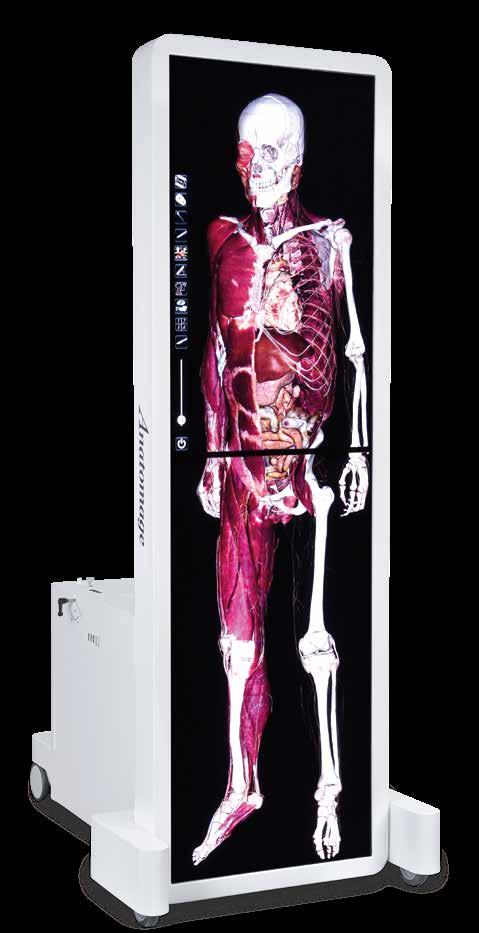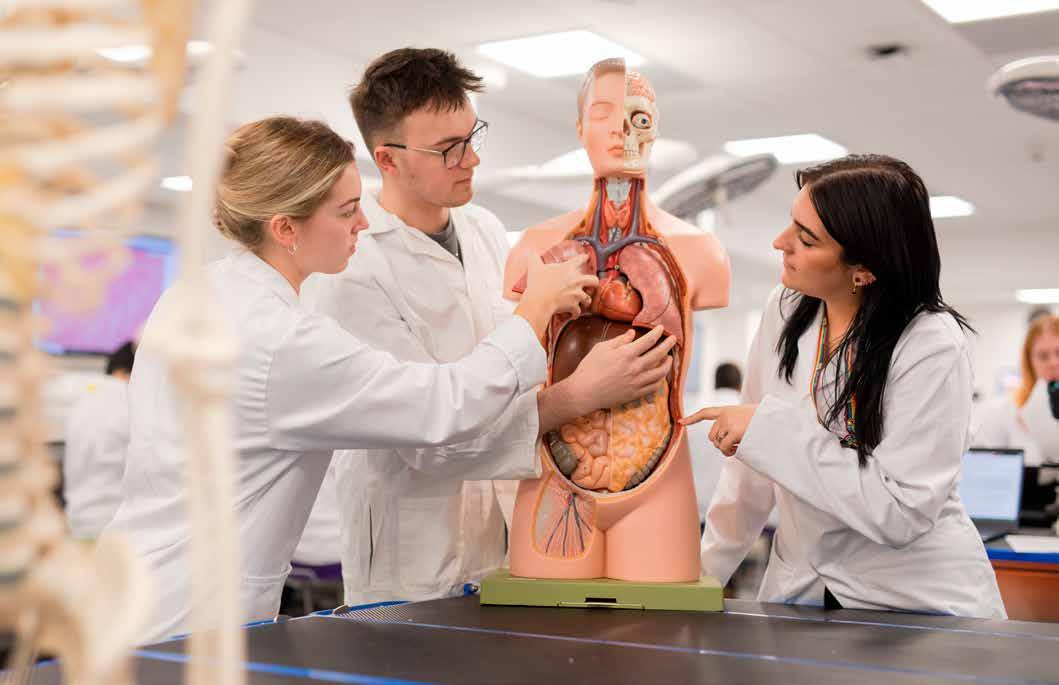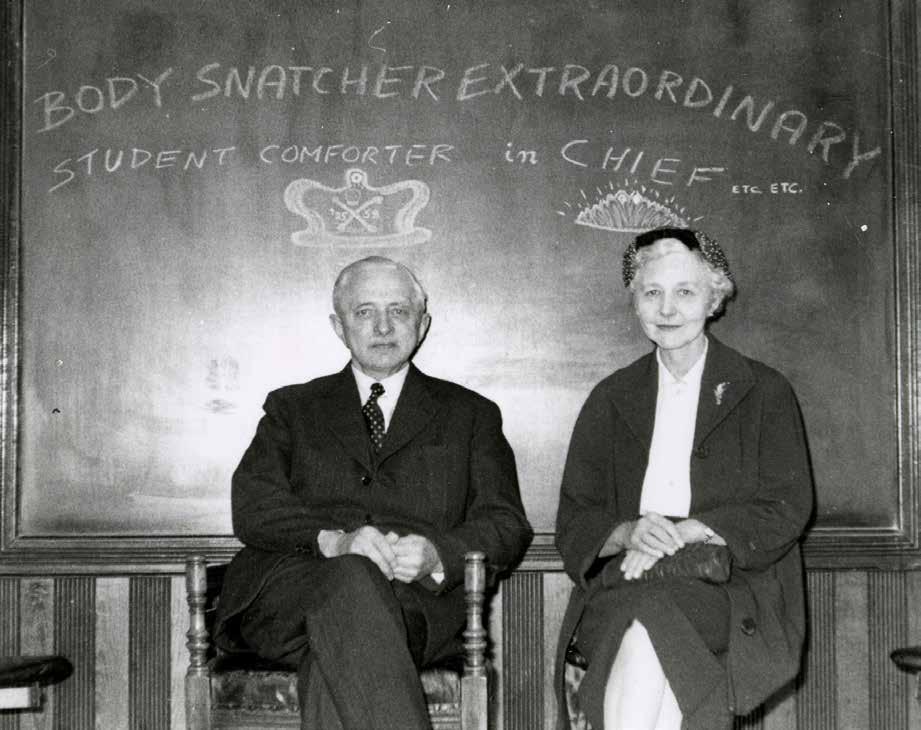
2 minute read
A trip down memory lane
The University’s
And
Advertisement
“Anatomy initially supported courses such as Medicine. The department was a small, hastily converted facility in the University’s Carnelley building before moving to the first Medical School building in 1904,” said Vivienne McGuire MBE, Centre Manager.
“Despite its humble beginnings, Anatomy quickly established itself as a core discipline, and the University became a leading centre for anatomical research.”
The Anatomy department moved into the newly built Medical Sciences Institute (MSI) in the 1970s, where it has remained ever since.
The Centre for Anatomy and Human Identification, as we know it today, was formed in 2008 however, it has since grown and expanded.
“A successful £1 million fundraising campaign in 2014 created a much larger mortuary on campus, enabling the University to become the first to use revolutionary Thiel embalmed cadavers, which give students invaluable learning opportunities,” Vivienne continued. “We are very grateful to those who donate their remains to the University. Their selfless gift so that others may learn is never taken for granted."
Anatomy has come a long way from a quickly converted workshop. “Today we are known as a place of innovation,” said Vivienne. “Here, we teach the next generation of medical experts, and our researchers are at the forefront in their fields of human anatomy, forensic science, and medical imaging.”
Department of Anatomy, 1978-79. At this time, Professor David Dick headed the department. Under his guidance, the department grew substantially, and specialised research groups were established. Nowadays, the Centre for Anatomy and Human Identification is home to a community of teachers and researchers working in the fields of anatomical sciences, forensic anthropology, biomedical engineering, craniofacial identification, medical research, surgical skills development, medical and forensic art, and augmented reality medical and anatomical educational products.
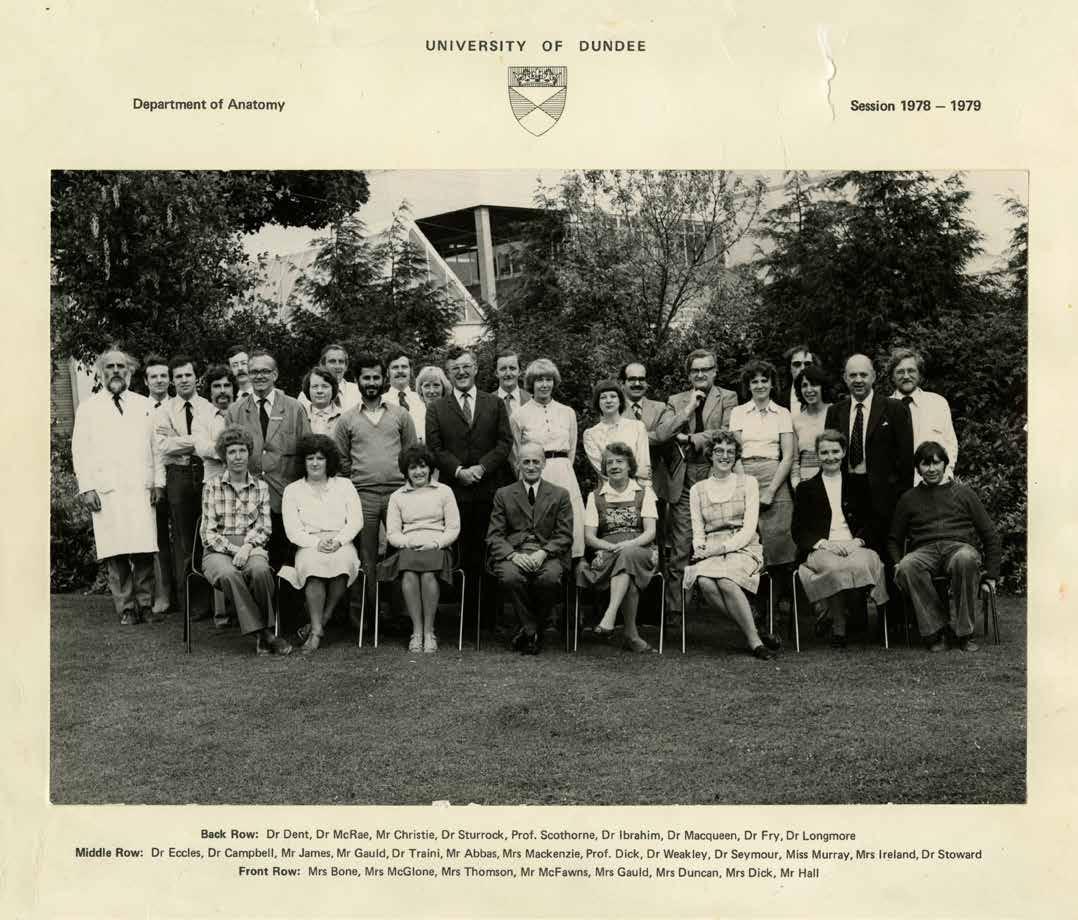
A dissection class in the 1980s. Up to 100 people each year donate their bodies to help to train aspiring doctors, scientists, dentists and surgeons. These 'silent teachers' are vitally important, with over 1,000 students benefitting each year from full-body dissection.
Anatomy students learning from textbooks, x-rays, anatomical models and specimens in the 1980s. Students still use these resources today however, technological advances have enabled more realistic and interactive learning experiences.
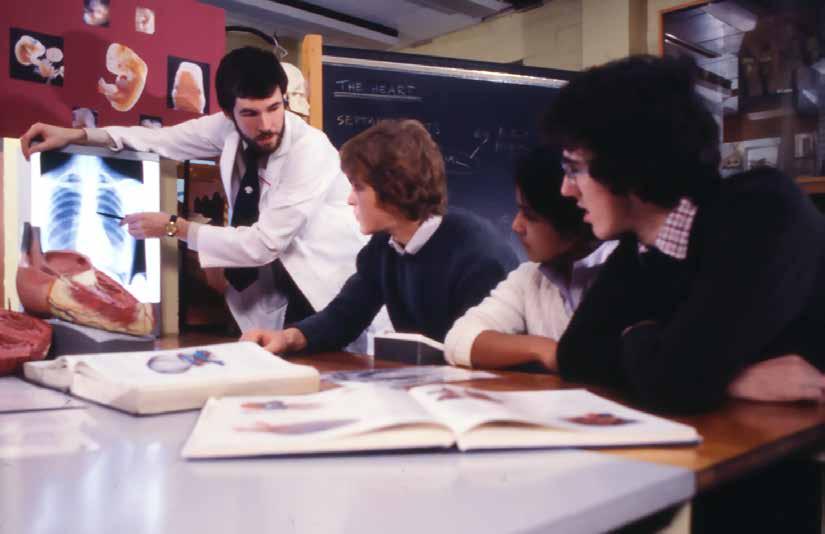
Continued over
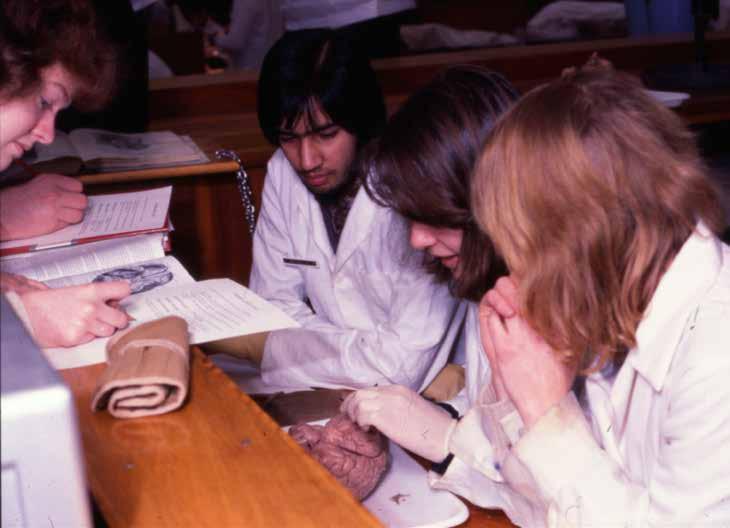
An Anatomy lecture in the 1980s using projectors and acetates. Technology has since evolved to include interactive whiteboards, tablets, and laptops.
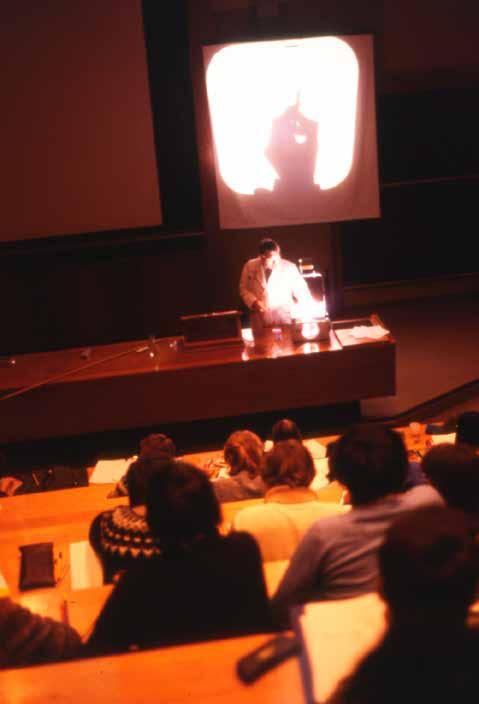
A collaboration between the Centre for Anatomy and Human Identification, the School of Humanities, Duncan of Jordanstone College of Art & Design and Museum Services saw Professor Dame Sue Black performing an Alien Autopsy in 2016! The event was part of the nationwide Being Human festival of humanities and celebrated the 150th birthday of H.G. Wells, author of War of the Worlds.
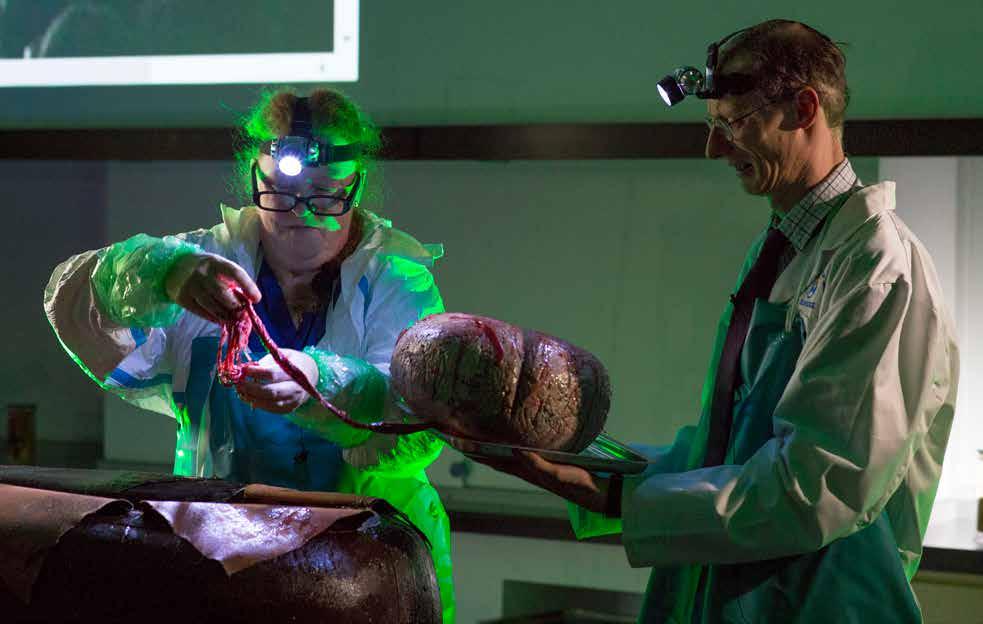
Professor David Dow and his wife, Dr Agnes Dow, established the Dow Memorial Trust in 1998. Today, the Trust keeps the couple's memory alive by supporting projects that reflect their passions. Generous support from the Trust enabled the creation of the Dow Anatomical Suite, a multi-purpose facility with state-of-the-art equipment where students can practise their skills in a safe and supported environment.
Thanks to a generous gift from the Binks Trust, students can explore human anatomy using a 3D interactive Anatomage table. This technology allows students to virtually dissect full-sized human bodies with the swipe of a finger.
